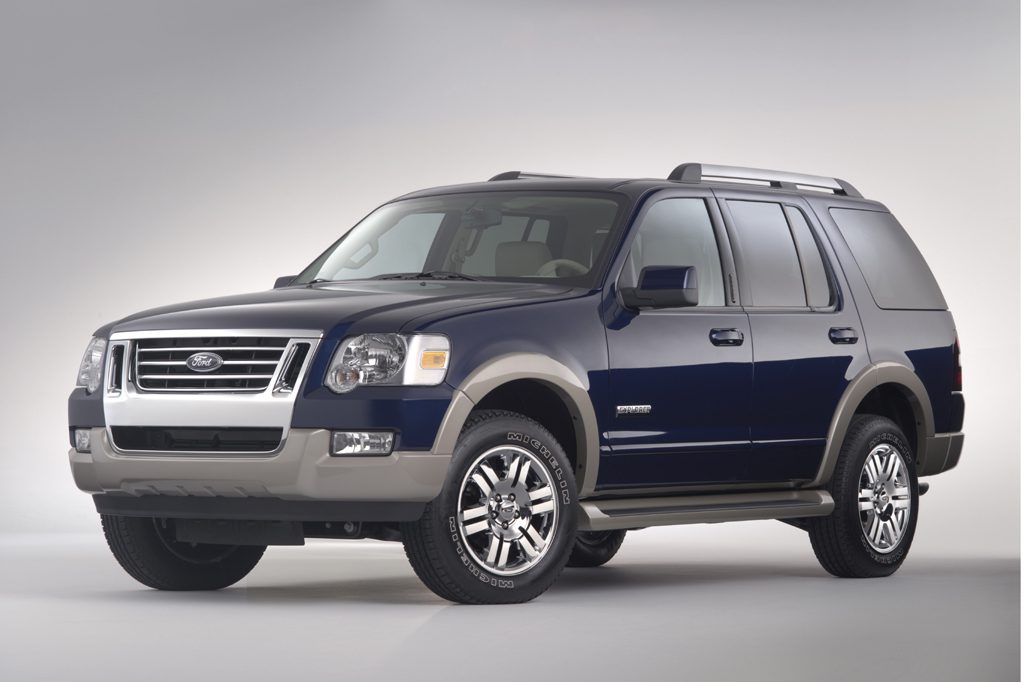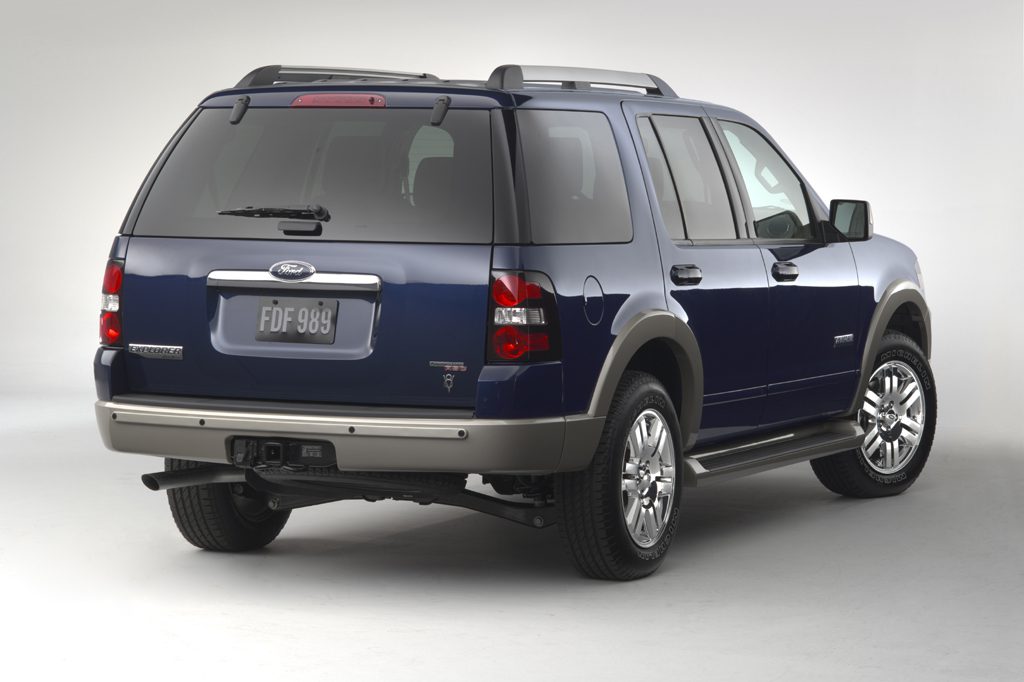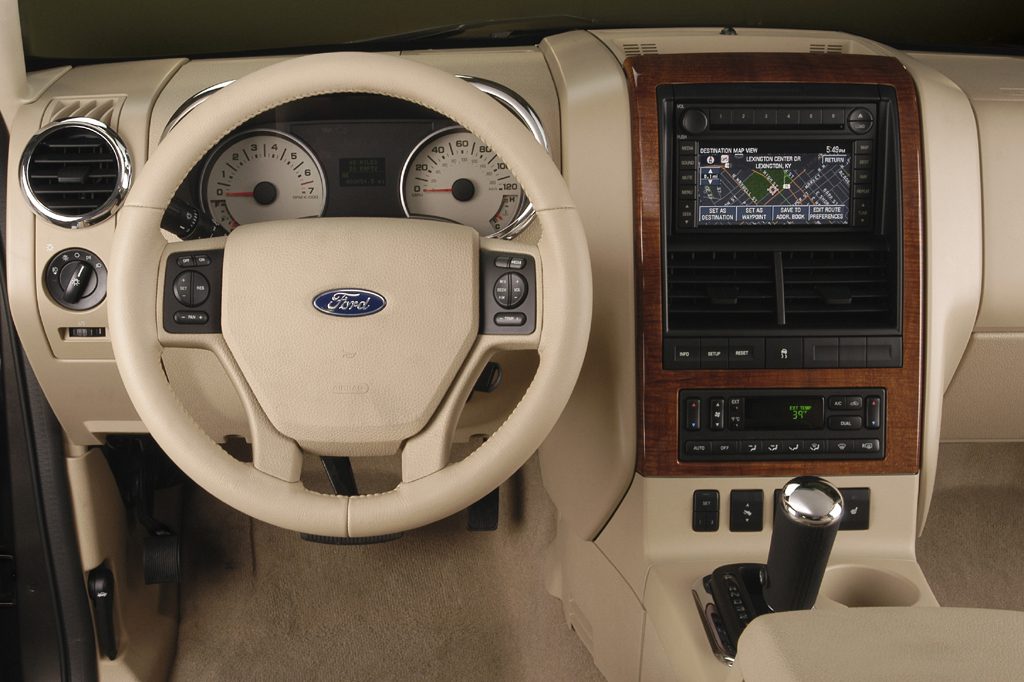| Midsize SUV; Built in USA |
|
|
| Good condition price range: $7,500 – $24,500* |

2006 Ford Explorer

2006 Ford Explorer

2006 Ford Explorer

2006 Ford Explorer
| Pros: |
|
| Cons: |
|
Like Mercury’s slightly more upscale Mountaineer, Explorer is a more-than-competent overall performer with an outstanding array of available useful features: V8 power, seven-passenger seating, curtain airbags, DVD entertainment, power-folding third-row seat, rear obstacle detection. The standard antiskid system was a laudable safety feature. Though a car-type SUV might be thriftier, those requiring Explorer’s towing ability will be well served. An Explorer serves trailering needs without giving up much refinement to lighter-duty midsize SUVs. Overall, this is a solid Recommended pick.
Overview
More V8 power, revised interior/exterior styling, and an available navigation system updated America’s best-selling sport-utility vehicle for 2006. Retaining its truck-type body-on-frame design, the midsize Explorer came with rear-wheel drive or four-wheel drive that could be left engaged on dry pavement and incorporated low-range gearing. Revisions for 2006 included a redesigned interior and updated exterior trim. Ford competed against the Dodge Durango, Honda Pilot, and Toyota 4Runner.
Two engines were offered: a V6 with 210 horsepower, and a V8 with 292 horsepower (up 53 over the prior year). The V6 came with a five-speed automatic transmission, while the V8 got a new six-speed automatic.
Front side airbags were newly standard. An available third-row seat provided seven-passenger capacity; for 2006, it offered a power-folding feature.
Antilock braking was standard, as was Ford’s AdvanceTrac antiskid system with Roll Stability Control. That latter system was designed to detect an impending tipover and activate the antiskid system to reduce the chance of a rollover. Optional head-protecting curtain side airbags covered the first and second seating rows and were designed to deploy in side impacts and rollovers.
Also available were second-row bucket seats, rear DVD entertainment, a sunroof, 18-inch chrome wheels, rear obstacle detection, power-adjustable pedals, and, new for 2006, a navigation system. Ford made satellite radio available as an option during the 2006 model year.
Yearly Updates
| 2007 Explorer Power running boards and a heated windshield joined the options list for 2007. |
| 2008 Explorer The 2008 Ford Explorer added some new features, including a “capless” fueling system. |
| 2009 Explorer The 2009 Ford Explorer was largely unchanged. |
| 2010 Explorer The 2010 Ford Explorer lineup was largely unchanged for what was its final model year in its current design. |
